 Aging is an inevitable part of life, and it affects our bodies in many ways. Our eyes are no exception. Any eye condition that results in poor vision has the potential to harm our safety, independence, and quality of life, and affects our ability to drive, read, and even recognize faces. This article will explore the preventive measures that we can take to maintain good eye health and clear vision. Moreover, low-vision devices and other forms of assistive technology may be of great assistance to those who are visually impaired and wish to continue living independently, and this article would also offer tips for selecting magnifiers for the elderly.
Aging is an inevitable part of life, and it affects our bodies in many ways. Our eyes are no exception. Any eye condition that results in poor vision has the potential to harm our safety, independence, and quality of life, and affects our ability to drive, read, and even recognize faces. This article will explore the preventive measures that we can take to maintain good eye health and clear vision. Moreover, low-vision devices and other forms of assistive technology may be of great assistance to those who are visually impaired and wish to continue living independently, and this article would also offer tips for selecting magnifiers for the elderly.
Statistics on Senior Citizens with Visual Impairment Worldwide
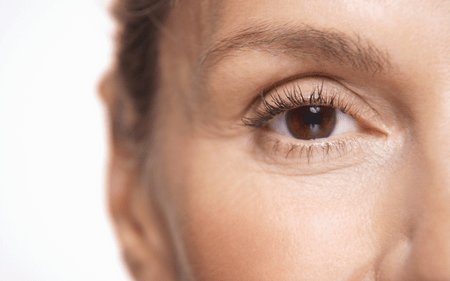 Visual impairment is a major concern among older adults around the world. Specifically, 20/200 vision, also known as legal blindness, is one of the most common types of visual impairment among older adults. This condition refers to having a visual acuity of 20/200 or less in the better eye, even with corrective lenses.
Visual impairment is a major concern among older adults around the world. Specifically, 20/200 vision, also known as legal blindness, is one of the most common types of visual impairment among older adults. This condition refers to having a visual acuity of 20/200 or less in the better eye, even with corrective lenses.
Read more: WHO Definitions of Low Vision
According to statistics from the World Health Organization (WHO), approximately 285 million people worldwide suffer from some form of visual impairment, and that figure is projected to quadruple by 2050. Among them, over 80% of all visual impairment cases are found in people aged 50 years and above. Among these individuals, approximately 36 million are legally blind, and 217 million have moderate to severe visual impairment.
The Impact of Aging: Common Signs of Aging Eyes

With aging, the eyes undergo various changes, including the thickening and yellowing of the lens, which can affect color perception and contrast sensitivity. These changes can occur gradually, and we might not notice them until they become more pronounced.
One of the most common signs is that our vision becomes more difficult to see objects clearly, especially at close distances. This condition is also known as presbyopia and affects almost everyone over 40 years old. The cause of this condition is that as we age, the lenses in our eyes get less flexible, making it more difficult to focus on close-up objects.
Another common sign of aging eyes is dryness, which is also known as dry eye syndrome, and it affects millions of people worldwide. This issue occurs because our eyes produce fewer tears when we age, which can lead to dryness, irritation, and discomfort. This can be especially problematic for persons who wear contact lenses or have certain eye-related medical issues. Additionally, floaters, namely specks or clouds that float across the field of vision are another sign of aging eyes.
Vision Impairment Caused by Age-Related Eye Disease
According to the World Health Organization (WHO), age-related eye diseases are the primary cause of visual impairment worldwide. Age-related eye diseases can have a significant impact on vision, leading to visual impairment and, in some cases, even blindness. The most common cause of visual impairment in older adults is age-related macular degeneration (AMD), which affects the macula, the central part of the retina responsible for detailed vision. Cataracts (a clouding of the lens in the eye that can cause blurry vision, glare, and difficulty seeing at night), and glaucoma (a group of eye diseases that damage the optic nerve) are another two common age-related eye diseases that cause sight loss among the elderly.
Anyone interested in learning more about age-related eye disease and how to manage age-related eye disease can discover further information here: Eye Condition
What Should We Do to Prevent Visual Impairment?

Vision loss may have a substantial impact on a variety of aspects of our daily lives, including our capacity for work and learning as well as our feelings of overall well-being — since visual impairment can result in social isolation and depression, the influence on mental health should not be disregarded. There are steps we can take to prevent or reduce the risk of visual impairment:
Periodic Eye Exams
Regular eye exams are one of the most crucial steps you can do to avoid vision loss. For healthy people under 50, a check-up every 2-3 years is recommended. Annual checkups are recommended for people over 50, or those with known health risks factors such as diabetes, high blood pressure, or a family history of eye disease. Regular eye exams can help detect any changes or abnormalities in the eyes before they become a problem.
Know Your Family History
Since some eye conditions, such as glaucoma, cataracts, macular degeneration, etc. have a genetic component, knowing your family’s history of vision problems may help prevent visual impairment or lower the likelihood of developing the same condition. This is, if you have a family history of these disorders, talk to your eye doctor about it and follow any recommended screening or preventative measures.
Maintain a Healthy Lifestyle
Maintaining a healthy lifestyle is also important for preventing sight decline. A nutritious diet rich in fruits, vegetables, and omega-3 fatty acids can help keep your eyes healthy. Regular exercise can also help reduce the risk of eye disease, as well as other health and mental problems. Moreover, avoiding smoking and limiting alcohol consumption can also safeguard your eyesight and overall health.
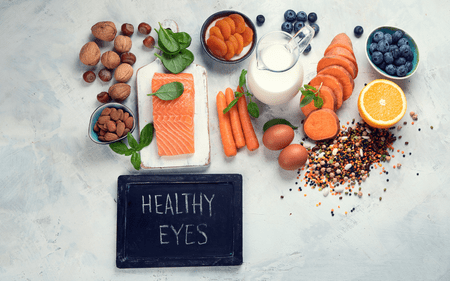
Guide to Choose Low Vision Magnifier for the Senior
For most elderly people, low-vision magnifiers can be an excellent solution to maintain independence and continue to enjoy their favorite activities. Here are some guidelines for selecting low-vision assistive devices for seniors:
Lightweight and Portable
Low vision magnifiers should be lightweight and portable, allowing seniors to carry with them wherever they go. This is particularly important for those who lead an active lifestyle and need to use the device while on the move. Handheld magnifiers are a great option for seniors who are always on the go. Zoomax Luna 6, Luna 8, and Luna S are excellent options for seniors who need a portable magnifier: all of them are handheld devices that fit comfortably in the user’s hand and weigh less than one pound, and are ideal for reading menus, signs, and price tags while shopping or traveling.
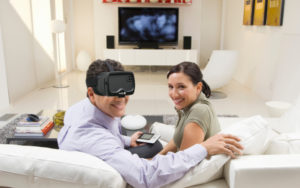
Additionally, low vision eyewear, Zoomax Acesight and Acesight VR are ideal hands-free solutions for low vision seniors. For people who want to learn more about low vision E-glasses, please read Low Vision E-glasses: Hands-free Solution for Visual Impairments.
OCR Technology and Navigation Function
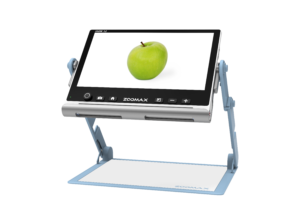
Automatic reading, which applies OCR technology, enables blind or low-vision people to hear what they are viewing or reading. Besides, the navigation function is particularly crucial since those who use electronic video magnifiers often miss words or struggle to locate the text because they can only view one or two lines at a time. Zoomax Snow 12 is a superb example of low-vision equipment with OCR technology, and users can also benefit from the reading line function to localize text and keep track of their reading location. Also, Zoomax Snow 12 provides the perfect solution for people who prefer a hands-free experience: users don’t need to move the materials, just merely arrange the materials, then scroll through the text by rolling the joystick. It is incredibly simple for the elderly.
Ergonomic Design and Display Screen
For seniors who plan to use their magnifiers for extended periods, an ergonomic design is essential. As the desktop electronic video magnifier, Zoomax Luna HD 24 Pro has an adjustable monitor bracket for ultimate viewing comfort, making it perfect for seniors who need a magnifier for extended reading or writing. Moreover, seniors who like high-quality displays will also appreciate the Zoomax Luna HD 24 Pro, which offers incredibly clear and crisp visuals that make it easier to read and perceive small details.
More Charging Options
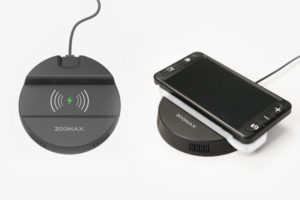
Nowadays, wireless charging is growing more and more popular since it makes items easier to use and maintain and reduces the risk of accidentally damaging by improper operation. Zoomax Luna 6 is an excellent example of a wireless charging dock-equipped portable electronic video magnifier, and it is an ideal option for seniors who require hassle-free, simple-to-use low-vision aids.
To sum up, low-vision magnifiers for the elderly should be compact, simple to operate, lightweight, and come with customized features. An effective low-vision magnifier could let seniors continue to engage in their favorite hobbies and pursuits without compromising their safety or independence.

